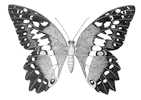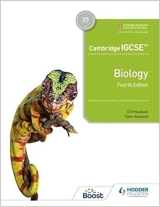Papilio demodocus - the Citrus Swallowtail Butterfly
Papilio demodocus is a butterfly, common in southern Africa. It is most abundant during the rains when its larvae (caterpillars) may cause damage to citrus trees.
Eggs
After mating, the adult female lays her eggs singly, cementing them in exposed positions on the upper surface of young citrus leaves. The egg is spherical, whitish in colour and with an almost smooth outer shell. Darker pigment may occur around the equator of the egg and at a point on the upper surface of the egg where a pore or micropyle is located. The micropyle admitted a sperm when the egg was fertilized inside the female. The egg contains yolk which nourishes the larva, and gaseous exchange is allowed through the micropyle. After a few days the larva can be seen through the shell, subsequently escaping from it by biting a hole.
The 3 mm larva eats the shell as its first meal, this apparently being essential for its successful development. After that, the caterpillar eats the leaves of the citrus tree, using its strong mandibles to chew the leaf margins.
Caterpillars
The body is cylindrical, distinctly segmented, and in young larvae pigmented black and white. Older larvae are predominantly green above and whitish below. Young larvae resemble bird droppings while older larvae appear to have no shadow and blend with the citrus leaves.
The larva has thirteen visible body segments of which the first three bear jointed true legs and represent the three future thoracic segments of the adult. The remaining ten segments constitute the abdomen, segments 3, 4, 5, 6 and 10 bearing pairs of larval legs or prolegs which are absent in the adult. The prolegs bear a double row of tiny hooks enabling the insect to hold firmly to the food plant. Pairs of respiratory valves or spiracles occur on the sides of the first thoracic segment and on abdominal segments 1 to 8.
The head is equipped with biting mandibles which move transversely. Behind these is a spinneret, a press device through which secretion is ejected from a pair of modified salivary glands within the larva. The liquid secretion, hardens on contact with air to form a thread of silk. A larva on a strange surface can be seen moving its head from side to side, extruding on to the substrate a silk safety line which can be gripped by its feet.
The eyes are two groups of simple ocelli on either side of the head, each ocellus consisting of a lens with light-sensitive cells beneath. With the aid of these ocelli a larva aligns itself along the leaf margin or can detect. changes in light intensity, but it is doubtful whether it sees a detailed image of its surroundings.
As the larva grows, its old cuticle is shed and replaced from below by a new cuticle whose folds allow for renewed growth. The splitting of the old cuticle is called ecdysis. The caterpillar therefore develops through four stages or instars, each ending in ecdysis. It eats the shed cuticle before resuming normal feeding.
Pupation
Mature larvae move to sites on the trunk or stems of the food plant. Here they settle, head uppermost, and spin a pad of silk. The caterpillar then moves upwards and clasps the pad with the last pair of prolegs while a girdle is spun to support the upper end of the larva when it releases its hold on the stem. The body shortens and swells in the thoracic region as blood is pumped forward and air swallowed until the last larval cuticle bursts suddenly behind the head.
This process takes about 24 hours. Rhythmic contractions of the body and a lubricating moulting fluid allow the split cuticle to pass towards the tail where it is discarded, the pupa attaching itself by the modified last pair of prolegs, the cremaster. At first pale and soft, the pupal cuticle hardens and may be pigmented brown or green to match the background.
The pupa does not feed. Reorganization of larval tissue into adult organs, already started in the larva, is completed. The eyes, antennae, legs, tongue and forewings of the imago are visible in the pupal cuticle. The silken girdle and pad are probably the remains of a reduced cocoon structure. Well developed cocoons are a characteristic of moths rather than butterflies.
Imago (adult)
During the rains, the adult hatches after about a week. Like ecdysis into the pupa, ecdysis into the adult takes place very quickly and must be watched for very carefully. If the pupa is formed at the end of the rains, it may not hatch at once but remain in a dormant state called diapause during which little oxygen is used and normal chemical reactions in the body are replaced by special anaerobic ones, that is, chemical processes not requiring oxygen. Whether pupation lasts for one week or longer, the adult emerges with small, sac-like wings, which are expanded by pumping blood into them. After this they flatten and become chemically hardened. The wings are supported by branching veins, each being hollow and containing a trachea, blood-space and nerve.
The body of the imago consists of a distinct head, thorax and abdomen, with three pairs of walking legs and two pairs of wings attached to the thorax. The head bears a pair of compound eyes, each with about six thousand separate lenses. Beneath each lens is a regular group of light-sensitive cells. The compound eyes are chiefly detectors of movement and pattern, also acting as direction finders. There is little evidence that the insect eye sees a distinct image of the kind seen by a mammalian eye. They are therefore useful in helping the insect to recognize shapes of flowers, or wing patterns of the same species of butterfly, and for detecting the wing movements or sudden approach of predators.
On the head there is also a pair of long antennae which bear organs of smell. In moths this sense is very acute but in butterflies it is often reduced, probably because their day-flying habits enable visual navigation.
The proboscis consists of two long, hollow processes grooved along their inner surfaces, so that when they are placed together they form a sucking tube. When not in use the proboscis is coiled beneath the head.
The head, body and legs are clothed with hairs, which are flattened and modified on the wings to form overlapping, pigmented scales, giving the wings their characteristic pattern. The scale colour may be produced by a bending of light rays through the scales so that they act like tiny prisms, or by the inclusion in the scales of pigment derived from nitrogenous waste materials. The forewings overlap the hind wings so that in flight both pairs move together.
The legs consist of nine sections, the coxa is attached to the body while the short trochanter hinges the long femur and tibia to it. There are five segments in the foot or tarsus. The last tarsal segments may bear taste organs. If they contact sugar or fruit juice, the proboscis is uncoiled. Many of the hairs on the legs and body are equipped with sensory nerve endings which make them sensitive to touch and vibration. In structure, they are quite unlike the hairs of mammals, being outgrowths of the cuticle and having no root.
Habits
The newly emerged female butterfly is attracted to the nectar of flowers, to urine and faeces, rotten fruit and other food sources, while the mature mated female is attracted to citrus oils on the leaves on which she lays her eggs. The early larvae are black and white in colour and do not attempt to hide, while the mature larva with its different colouring withdraws to parts of the plant where its light under parts cancel its natural shadow and allow it to blend with the leaves. Bright light and high temperature cause the larva to leave its resting position and actively seek shade. As a defence against predators, the caterpillar expands the third thoracic segment which bears "eye-spots". At the same time, a forked, tongue-like osmaterium, normally withdrawn into the first thoracic segment, is extruded and vibrated. These changes give the larva a snake-like appearance and together with a pungent, aromatic secretion from the mouth, frighten off animals that might eat it.
Adult butterflies can distinguish between certain colours only and are most sensitive to the red end of the spectrum. Males are attracted to the female by her scent, her flight behaviour and colour pattern. Male butterflies may also produce a sex scent from special distributing scales on the wings. Mating takes place with the male holding the tip of the female's abdomen with his abdominal claspers, sperms passing into the female in a special sperm-package or spermatophore, so fertilizing the eggs internally. There may be two or more broods during the rainy season.
Occasionally larvae of Papilio butterflies may be seen dried and dead, their shrunken bodies attached firmly to a leaf. If the barrel-shaped cuticle is broken open, a cocoon will be found inside the larval skin. In this cocoon is a pupa of a parasitic ichneumonid wasp. This insect lays an egg in the body of a young swallowtail caterpillar and the wasp larva is nourished from the body juices of its host.
Butterflies in general
The account of structure and life history given above is generally applicable to most butterflies and moths. However, some major differences do occur. Many butterflies drop their eggs among herbage and do not seek a food plant on which to stick their eggs. In many butterflies and moths the eggs are laid in batches; the eggar moths often lay their eggs in masses on walls after they have been flying round lamps at night. In this case the eggs are covered with a layer of scales detached from the abdomen of the female. These scales are irritating to predators.
Some butterfly and moth larvae are very particular about their species of food plant, while others eat many different species of plant. The citrus swallowtail larvae are leaf-eaters but in the tropics many of the most destructive moth larvae are stem-borers, burrowing in the succulent stems of plants like sugar cane and maize.
Many butterfly pupae hang head downwards by the cremaster and lack a girdle. The group of insects which includes the citrus swallowtail is often popularly divided into moths and butterflies. In the tropics this division becomes difficult using the simple characteristics which apply to these insects in cool, temperate regions of the world. Thus although most moths tend to fly at night and are dull in colour, many tropical moths tend to be brightly coloured like butterflies and fly during the daytime.
Butterflies tend to fold their wings vertically above the body at rest, while moths hold their wings flat or in a roof-like manner over the body. In the skipper butterflies, however, the wings may be held in a moth-like position. In most butterflies the antennae are clubbed at the tips, but in some groups of moths, admittedly a minority, the antennae may also be clubbed. Zoologists usually separate moths and butterflies using complex differences in the wing venation and sexual organs rather than the characteristics discussed above.
For illustrations to accompany this article see Papilio demodocus| Search this site |
| Search the web |
© Copyright D G Mackean & Ian Mackean. All rights reserved.

